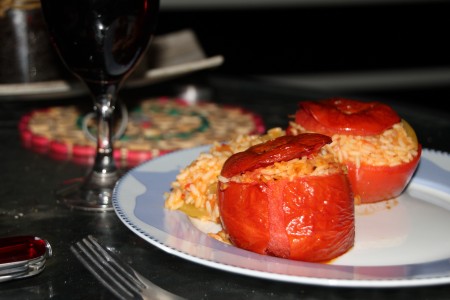Gluten Free Flours for Baking. People who are sensitive to wheat, or have coeliac disease, also known as celiac disease, need to avoid wheat completely. Here are some gluten free flours which actually are tastier and more nutritious than eating baking products which contain only wheat.
The best flours to use in your Gluten Free flour mix are the following. These combinations are highly nutritious and contain good amounts of protein.
Arrowroot
Besan flour, or Chick Pea Flour.
Cornmeal
Potato Flour
Rice Flour
Soy Flour
Tapioca Flour
It is a good idea to make up a mix of the flours you wish to use in your gluten free flour mix beforehand. A large jar or tin of it in the pantry will keep several weeks in the cool, but the best method for storing flour or grain is to put it into a cotton or linen bag so that it can breathe. By making up a quantity of flour, you do not have to mix it up fresh each time you bake.
You can use any combination of the above flours, but here are two different recipes which work very well:
Gluten Free Flour Mix Number One: For Bread and Pastry, use the following Gluten Free Mix:
- Four parts Besan flour, or chick pea flour.
- Four parts Potato flour.
- Two parts Rice flour
- Two parts Arrowroot flour or Tapioca flour
- One part Soy flour.
Gluten Free Mix Number Two: For Gluten Free Cookies, cakes, muffins, and pancakes use the following mix:
- Four parts Besan flour, or Chick pea flour
- Four parts fine yellow cornmeal
- Two parts Tapioca flour, or Arrowroot flour.
- Two parts rice flour
- Two parts soy flour
Test out your pancake mix which is listed directly above:
To Make Gluten Free Pancakes:
- Take one cup of the Gluten Free Flour Mix Number Two
- Add one cup of milk or water: You might need slightly more water, depending on what flours you have used. These gluten free flours do not need as much water as wheat flour does, in making a pancake.
- Add two free range organic eggs
Mix altogether. Heat up a sturdy fry pan. Add some butter or olive oil and cook as for normal pancakes, pouring in a thin covering of the batter each time. Let cook for two minutes or so, then turn over.
You need to mix the batter well each time before you pour a cupful into the heated fry pan, as the solids will settle on the bottom of the bowl otherwise.
High Protein Gluten Free pancakes;
Simply follow the recipe above for making pancakes with gluten free flour. Add half a cup of sunflower seeds to the mix before cooking.
Sunflower seed pancakes: Gluten free flours such as besan, or chick pea flour, soy flour, cornmeal and others, are very high in protein. When you mix these flours together, you increase the quality of protein and make the protein more complete. By adding eggs, and adding sunflower seeds to the mixture, you end up with a very high quality protein which is easy to digest. This food is great for people on vegetarian diets.

